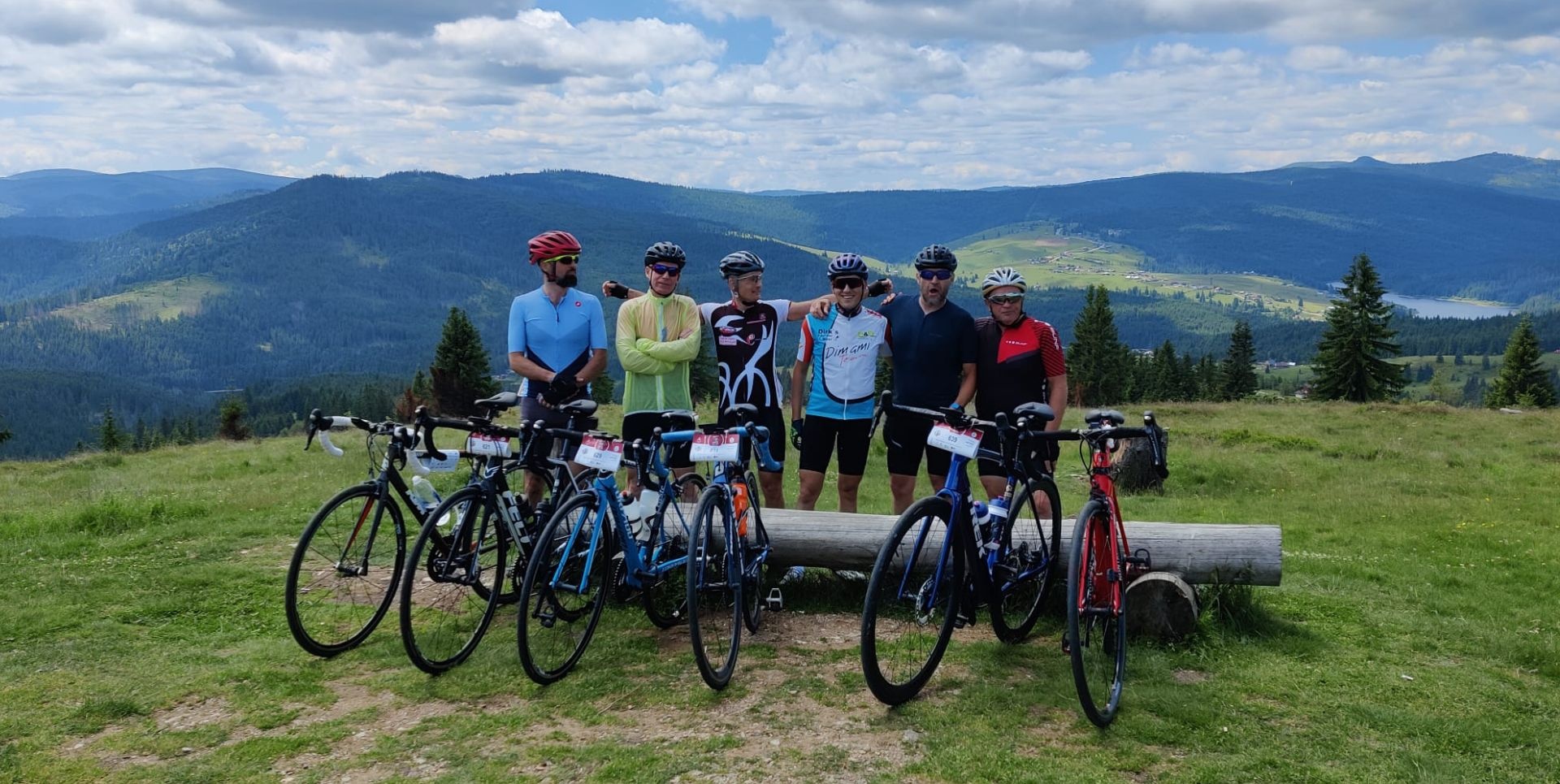Advice
What could you need during the tour?
Encounter with sheepdogs
First-aid kit
Tourist's Decalog
What could you need during the tour?
- The tour can be completed with any type of bike in GOOD condition. Due to the steep climbs it is recommended to use at least a 10-speed bike.
- The bike should have all the equipment required by the law for public roads (front and rear lights, spoke reflectors).
- Take with you 2 inner tubes, repair kit, bike tyre removal tool, pump.
- Check the condition and quality of the tyre casings: a punctured inner tube is easily repaired or replaced, eventually with the help of a fellow participant, but if the casing is destroyed, that is a bigger problem! In such cases it could be useful to have at hand a role of strong, cloth-backed duct tape – this can keep a torn casing alive for a while.
- The use of bike helmets is STRONGLY RECOMMENDED; goggles are useful, too.
- Wear clothing with reflective elements, if possible (it is compulsory by night!). Bring a raincoat, maybe a head-mounted lamp as well.
- Cell phone: fully charged! If you wish to use the GPS function on your phone, it is advisable to carry a spare battery.
- Navigation advice for smartphones: www.openmaps.eu/mapsforgedownload | www.openmaps.eu/mapsforgetheme
- It is recommended to wear hiking shoes (on some sections of the tour you may have to hike and push the bike)!
- Start off with 1-2 liters of water and food according to your needs. The organizers will provide water, snacks along the way and warm meal at the end of the tour.
Encounter with sheepdogs
In various sections of the tour you may pass near flocks of sheep and sheepfolds, and the dogs guarding these may run towards you. The shepherds may not always be able and willing to control their dogs. As organizers, we cannot do much to prevent such encounters. However, we can give you advice on how to act in such cases.
- When you notice dogs approaching, DO NOT accelerate (!), do not try to outrun them, you have NO chance. Do not panic, act calmly.
- GET OFF THE BIKE and push it SLOWLY. If you see a dog running at you (and barking), turn towards it suddenly, keeping the bike in front of you; this will scare the dog and it will back off. After this proceed calmly on your way.
- These dogs are protecting the area considered theirs from any “trespassers”. They do not care about those moving outside the boundaries of their territory.
- Dogs are irritated by the sight of fast-moving targets (bikers, runners), they approach these running. Those walking slowly by are escorted by the dogs from a certain distance (about 10-20 m) until they reach the boundary of the defended area. The dogs do not attack, they only bark, sometimes frighteningly. As you approach the boundary of their territory, they gradually slow down and then stop.
- Once there is a safe distance (100–150 m) between you and the dogs, you can try to get on the bike and start rolling slowly. Check if the dogs start running after you again or not.
- DO NOT throw stones or other things at the dogs. You can hold a stick in your hand, but do not act aggressively.
- If you consider it necessary, bring a dog deterrent.
First-aid kit
For your safety on the tour, we compiled a list with necessary medication and sanitary products that can be helpful in case of injuries, accidents or sickness. Please, if you can, take these with you on the tour.
- all the medication you currently take for acute or chronic conditions
- pain medication (e.g. Ibuprofen, Ketoprofen, Paracetamol)
- diarrhea medication (e.g. Loperamid, Saprosan)
- magnesium
- grape-sugar
- elastic bandage
- band aid (roll, medicated strips)
- bandage material
- Survival blanket (use with the golden side out for heat preservation and the silver side out for cooling)
- triangular bandage
- rehydration salts, isotonic drinks
Tourist's Decalog
- Only embark on tours that are within your powers, otherwise you risk your health and prevent your companions from completing their itinerary.
- Be there at the appointed start and return times; be the one to wait ten minutes for the start rather than make everyone else wait five minutes for you.
- Do not be a burden to anyone; be cheerful, but do no disturb your companions with constant chatter or loud talking; be modest, do not ruin the good mood and fun of others through derogatory comments, outbursts of temper or impatience.
- Appreciate your tourist brethren, make yourself useful in the party, help those in need, do not desert them in distress.
- Love nature, preserve it in its original state, do not destroy any plant or animal without a serious reason. Do not carve your name or the name of your organization anywhere; burn or conceal your waste.
* This was considered acceptable procedure 100 years ago, but not today. Today’s rule: take your waste home with you and dispose of it appropriately – recycle if possible. - Do not light a fire in the forest, the wind may cause trouble; if you light a fire on a field or meadow, far from the forest, do not leave it burning.
- Do not scandalize villagers with your words, conduct or clothing, treat them as your equals and try to conform to their customs.
- Do not abuse the right of hospitality, do not discredit tourists; spare the property of others, do not wander off the road or path, do not trespass (through crops, hayfields, gardens).
- Tourist shelters are not pubs, they are lodgings or guest houses of an organization, therefore you should behave as a guest in a way that will not discredit you, your organization and your nation.
- In the nightly rest time – in a tourist shelter, a private home, a hayloft, in a tent or anywhere else – do not disturb your companions by talking, walking about, going to bed late or getting up early, because the success and joy of many excursions have been ruined by a sleepless night – do not be the cause of one. Strive to be a model tourist!
(Published in the 1937 September-October issue of ERDÉLY EKE’s magazine, pages 89-90)


